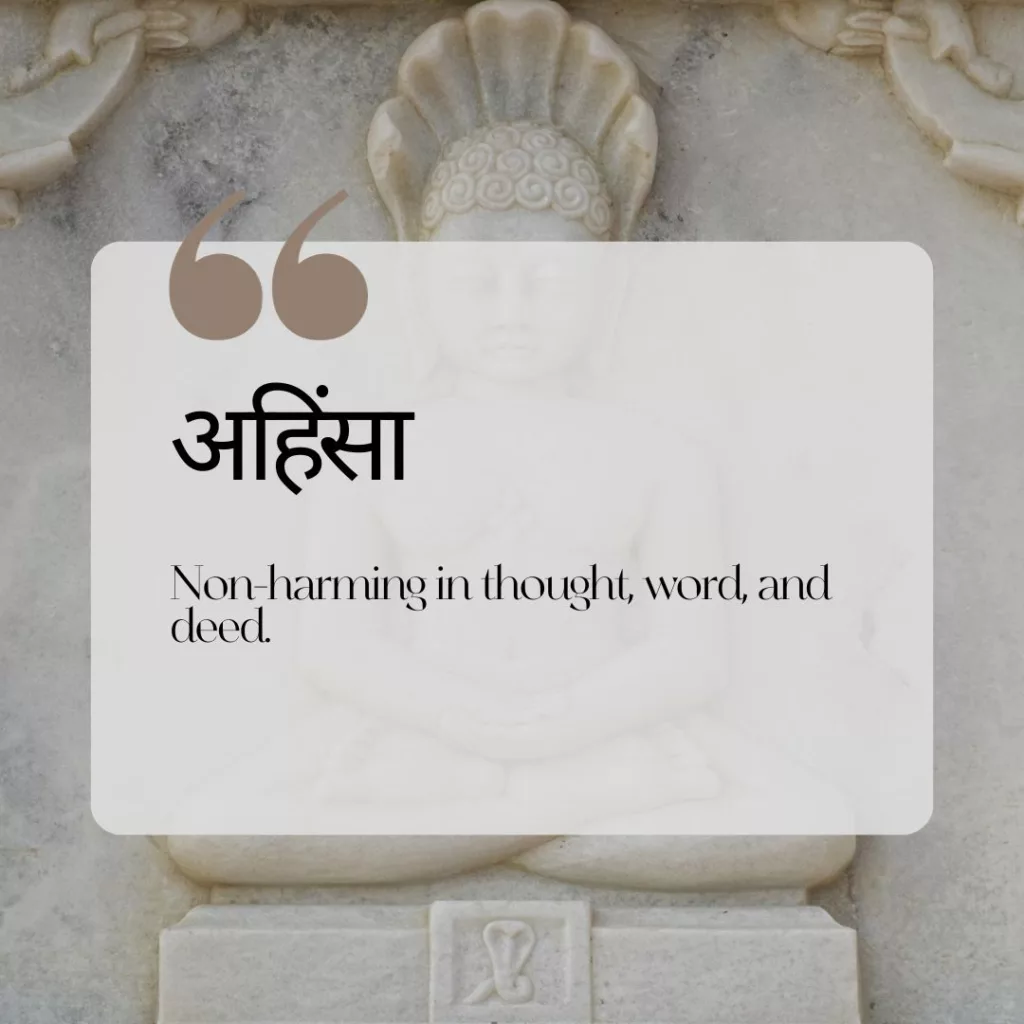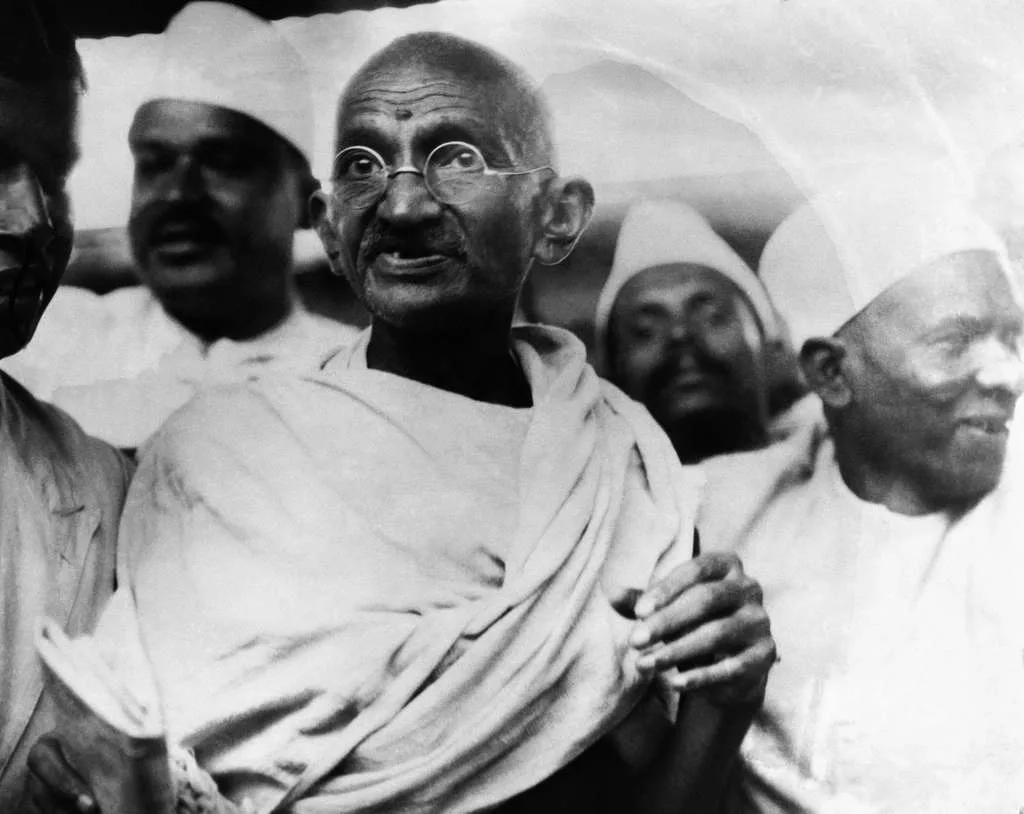Ahimsa: The Ancient Indian Principle of Nonviolence

Ahimsa, a term rich in history and profound in its teachings, represents a fundamental concept in Indian philosophical thought. Stemming from ancient traditions, Ahimsa is not just about refraining from causing physical harm, but delves deeper into the realms of mental and emotional non-harming. In this article, we’ll explore the facets of Ahimsa, its origins, significance, and its far-reaching impact on both individual and societal levels. If you’ve ever been curious about nonviolence and its practices, this is a read you wouldn’t want to miss.
Key Takeaways:
- Ahimsa, Beyond Nonviolence: It’s about cultivating love, understanding, and harmony with all beings.
- Historical Roots: Ahimsa has deep roots in ancient Indian traditions, from Hinduism to Jainism.
- Modern Exponents: Figures like Gandhi, Martin Luther King Jr., and Nelson Mandela showcased the power of nonviolent resistance.
- Personal Practice: From our dietary choices to our daily interactions, Ahimsa can guide our actions and decisions.
1. What Does Ahimsa Mean?
The Definition and Etymology
Derived from Sanskrit, the term “Ahimsa” can be split into “a-” (not) and “himsa” (harm or injury). Thus, at its core, Ahimsa means “not harming” or “nonviolence.” It’s a principle that encompasses a broad range of behaviors and attitudes, urging us to refrain from causing any harm to another living creature, be it through words, actions, or even thoughts.
Ahimsa is not just about avoiding negative actions, but also about cultivating positive ones. It’s a call for love and compassion, promoting a lifestyle that seeks harmony with everyone and everything.
Ahimsa in Religious Contexts
Ahimsa is an integral concept in several Indian religions, notably Hinduism and Jainism. It represents an ethical principle widespread in India, urging followers to cause no harm in thought, word, or deed.
In Hinduism, the practice of Ahimsa is often linked with the concept of Dharma, or righteous living. For Jains, Ahimsa is even more central, guiding their dietary, social, and even occupational choices.
Ahimsa and Non-violence
| Term | Definition |
|---|---|
| Ahimsa | Non-harming in thought, word, and deed. |
| Non-violence | Refraining from causing physical, mental, or emotional harm. |
| Non-injury | Avoiding actions that might injure another living being. |
While Ahimsa, non-violence, and non-injury might seem synonymous, they have nuanced differences. Ahimsa is a broader concept, touching upon harm in all its forms, while non-violence specifically refers to avoiding physical violence. Non-injury, on the other hand, focuses on actions that might cause harm.
2. Historical Roots of Ahimsa in Hinduism and Jainism

Ahimsa in Ancient Hindu Texts
Ahimsa finds mentions in several ancient Hindu scriptures, including the Vedas and Upanishads. The Bhagavad Gita, a revered text, elaborates on the importance of practicing Ahimsa as part of one’s Dharma.
Ahimsa: Central to Jain Philosophy
For Jains, Ahimsa goes beyond a mere principle; it’s a way of life. Jain monks often go to great lengths to ensure they don’t harm even the smallest creatures. They sweep the path they walk on to avoid stepping on insects and wear masks to prevent inhaling tiny beings.
3. Yamas: Ahimsa as the First Limb
Introduction to Yamas
In the realm of yoga philosophy, the Yamas are described as the ethical guidelines for living a righteous life. They are considered the first limb of the eightfold path in the Yoga Sutras of Patanjali. Ahimsa, often considered the most important, is the first of these Yamas.
The Five Yamas
The Yamas consist of five ethical practices:
- Ahimsa (Nonviolence): Beyond avoiding harm, it encompasses love, compassion, and understanding towards all living beings.
- Satya (Truthfulness): The practice of being honest and transparent in all interactions.
- Asteya (Non-stealing): Refraining from taking what doesn’t belong to us, whether material or intangible.
- Brahmacharya (Celibacy/Right use of energy): Channeling our energy towards meaningful and constructive purposes.
- Aparigraha (Non-possessiveness): Living simply and not accumulating unnecessary possessions or attachments.
Ahimsa: The Foundation of Yamas
Being the first Yama, Ahimsa sets the tone for the rest. It is believed that when Ahimsa is mastered, hostility ceases in the yogi’s presence. Thus, practicing Ahimsa takes courage and is the spontaneous expression of the highest form of self-awareness.
4. The Yoga Sutras: Patanjali’s Take on Nonviolence
Patanjali’s Yoga Sutras: A Brief Overview
The Yoga Sutras, composed by the sage Patanjali, are a collection of 196 aphorisms that provide a guide to the practice of yoga. The Sutras emphasize both the physical and mental aspects of the practice, offering insights into meditation, ethics, and the nature of existence.
Ahimsa in the Yoga Sutras
Ahimsa features prominently in Patanjali’s teachings. He emphasizes that for one to progress in the practice of yoga, the foundation must be non-harming. In the Sutras, it is said that when a person is firmly established in non-violence, all beings around them cease to feel hostility.
The Deeper Layers of Ahimsa
For Patanjali, Ahimsa went beyond just physical harm. Negative thoughts, whether acted upon or not, went against the principle of Ahimsa. Thus, true nonviolence required mastery over one’s mind and emotions, not just actions.
| Aspect | Explanation |
|---|---|
| Physical Harm | Refraining from actions that cause pain to others. |
| Verbal Harm | Avoiding words that can cause pain or distress. |
| Mental/Emotional Harm | Cultivating positive thoughts, free from malice and jealousy. |
5. Gandhi: A Modern Exponent of Ahimsa

Mahatma Gandhi and Nonviolence
Mahatma Gandhi, often referred to as the “Father of the Nation” in India, is one of the most renowned figures associated with the principle of Ahimsa. His nonviolent resistance against British colonial rule not only paved the way for India’s independence but also inspired numerous other civil rights movements across the world.
Gandhian Philosophy of Ahimsa
Gandhi’s approach to Ahimsa went beyond mere non-violence. He believed in “Satyagraha” or “truth force.” For Gandhi, Ahimsa was not just a strategy but a way of life, a profound inner transformation that emphasized love, truth, and self-sacrifice.
Global Impact of Gandhian Ahimsa
Gandhi’s principles have had a lasting impact, inspiring figures like Martin Luther King Jr. and Nelson Mandela. They adopted and adapted the tenets of Ahimsa to their respective struggles, proving the universality of nonviolent resistance.
6. The Deeper Meaning of Ahimsa: Beyond Physical Harm
Mental and Emotional Dimensions of Ahimsa
While refraining from physical harm is straightforward, practicing Ahimsa in our thoughts and emotions is a more profound challenge. This requires us to be mindful of our intentions, cultivating positive thoughts and avoiding harboring resentment, jealousy, or ill will.
Ahimsa as Self-awareness
Ahimsa is not just about our interactions with others but also our relationship with ourselves. It’s about recognizing and acknowledging our negative patterns and working towards self-improvement. Daily meditation practice can help in developing this attitude of non-harming.
Ahimsa in Speech
Words can be as impactful as actions. Practicing Ahimsa in speech involves refraining from uttering words that can cause pain, insult, or harm. It’s about speaking truthfully, kindly, and constructively.
7. Practicing Ahimsa in Daily Life
Dietary Choices: Vegetarianism and Veganism
One of the tangible ways people practice Ahimsa is through their diet. Many choose a vegetarian or vegan lifestyle, refraining from consuming animal products to prevent harm to animals.
Mindful Interactions
Every day, we interact with numerous individuals, each carrying their own set of challenges and experiences. Practicing Ahimsa means approaching these interactions with empathy, understanding, and patience.
Environmental Ahimsa
Ahimsa extends to our relationship with the environment. By adopting sustainable practices, reducing waste, and being mindful of our consumption patterns, we can practice non-harming towards the planet.
8. Ahimsa in Action: Real-world Examples
Martin Luther King Jr. and the Civil Rights Movement
Inspired by Gandhian principles, Martin Luther King Jr. championed nonviolent resistance during the American Civil Rights Movement. His dedication to Ahimsa was evident in his speeches and actions, advocating for peaceful protests against racial segregation and discrimination.
Nelson Mandela and Apartheid
Nelson Mandela, another iconic figure, adopted the principles of Ahimsa in his fight against apartheid in South Africa. While he faced immense challenges, Mandela’s commitment to nonviolence and reconciliation eventually triumphed, leading to the end of decades of racial segregation.
Daily Acts of Kindness
Beyond these global figures, Ahimsa is practiced daily by countless individuals. From those who choose to refrain from gossip, to those who intervene in situations of bullying or harassment, everyday acts of kindness and non-harming represent Ahimsa in action.
9. Vegetarianism: A Dietary Form of Ahimsa
The Ethical Choice
For many, the decision to adopt a vegetarian or vegan lifestyle stems from the principle of Ahimsa. By choosing not to consume animal products, individuals aim to reduce harm to animals and promote more humane treatment.
Health and Environment
Beyond the ethical motivations, vegetarianism also offers health benefits and is more sustainable for the environment. This alignment of personal health, ethical considerations, and environmental sustainability makes vegetarianism a holistic expression of Ahimsa.
10. Conclusion: Why Ahimsa Matters Today
In an age characterized by rapid change, conflict, and societal divisions, Ahimsa’s teachings are more relevant than ever. It offers a path forward, a way to navigate challenges with grace, understanding, and compassion.
Conclusion
By embracing Ahimsa, we not only enhance our own lives but contribute positively to the world around us. Whether you’re a yoga teacher, a student, or someone simply interested in ethical living, Ahimsa offers a timeless principle for a life of purpose, peace, and compassion.






